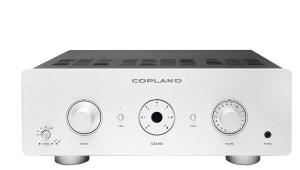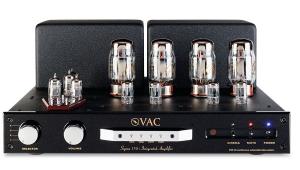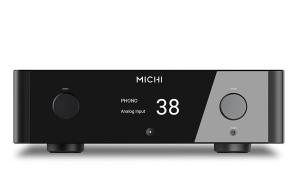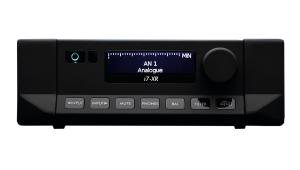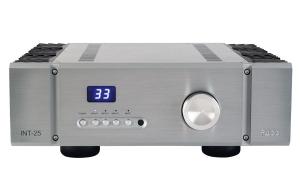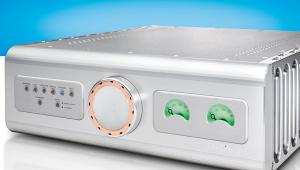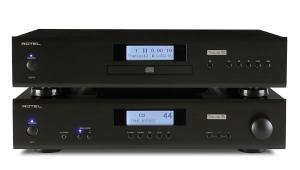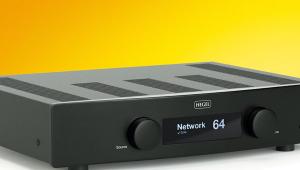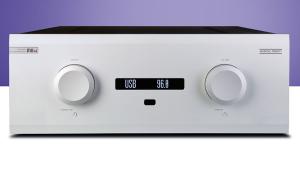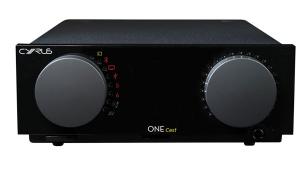Copland CTA408
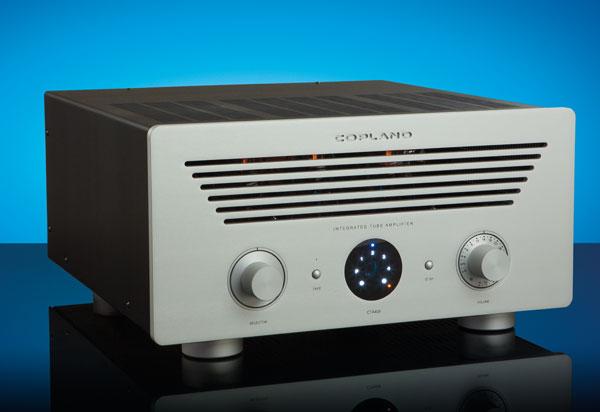
 Imagine an alternative dimension, almost exactly the same as our own, but for the tiny detail that humanity has never cottoned on to the use of transistors in amplifiers. Every other facet of engineering has proceeded as normal, but if you want to make music you’ll need vacuum tubes. It sounds outlandish, but it
is the closest approximation to the thinking that created the valve-based integrated amplifier you see here.
Imagine an alternative dimension, almost exactly the same as our own, but for the tiny detail that humanity has never cottoned on to the use of transistors in amplifiers. Every other facet of engineering has proceeded as normal, but if you want to make music you’ll need vacuum tubes. It sounds outlandish, but it
is the closest approximation to the thinking that created the valve-based integrated amplifier you see here.
Copland is a Danish-based audio company founded by Ole Møller in the mid-eighties. It builds products that use valves in its pre and power stages, but in combination with modern design practise in terms of circuits, layouts and materials. The argument goes that by doing so, previously unattainable levels of performance are now within reach. The CTA408 is the flagship of the range and takes Copland’s valve philosophy further than its predecessors. It is built around the KT150 valve, which is a 21st-century innovation and an evolution of the KT88 and an altogether bigger and more potent device, capable of delivering 70W as a single unit. Copland prefers to run its valves less than flat out and the CTA408 uses four to deliver a claimed 2x 75W of power between 3 and 8ohm. This is combined with a preamp that uses the same combination of 12BH7 and 12AY7 valves as the smaller CTA405.
It provides four line-level inputs and a tape loop, joined by a phono stage that supports both moving-magnet and moving-coil cartridges via J-FETs and active RIAA equalisation courtesy of “more than 100 discrete components inside a noise-shielding box of its own”. Loading adjustments are made at the rear and there are separate inputs for MM or MC cartridges. A 6.35mm headphone output socket is around the side and runs off a dedicated headphone amp and adds to the usefully extensive functionality.
Take the lid off and you can see that the power supply arrangements hover between comprehensive and obsessive. The output transformers are Copland’s own and in the same manner that the main valves are run unstressed, are considerably over specified to prevent saturation. It seems pretty likely that in the hands of a more cavalier company, the ingredients of the Copland could easily give a three-figure power output, but that isn’t the way this integrated is designed to work.
The CTA408 is impressively user friendly for an amplifier built around vacuum tubes. Other than the fact that it won’t produce any sound for about 30 seconds after you turn it on via the standby switch on the front panel or the remote control (having first switched on the mains at the rear) – thanks to a software controlled start up process designed to protect the valves – it behaves in a manner that is entirely in keeping with solid-state rivals at a similar price (see box out). It is utterly silent at idle and free from any pops or thumps through the speakers as it powers on or off. Copland’s decision to completely enclose the valves – as it does in its other designs – means that this is a big chassis, but one that’s entirely practical in households with small children and pets.
It is beautifully made with the casework feeling exactingly assembled while the two motorised control knobs either side of the central source display have a lovely action. Copland has allowed itself a rare styling indulgence in the form of six horizontal strakes that give a glimpse of the KT150 valves inside. I prefer the more unadorned look of the company’s smaller CTA405, but this is still a stunning piece of equipment and has a high-class look and feel that befits the asking price.
Sound quality
With a claimed 2x 75W at its disposal, the CTA408 can work with a wider selection of loudspeakers than you might expect of a valve amplifier design. I start with Spendor’s A1 standmount for its outstanding ability to reveal the basic attributes of whatever amp is used to drive it. Powered by the Copland, I notice a complete absence of warmth or the ‘bloom’ that can often accentuate the midrange with some valve designs. Instead, it delivers a performance that is big, confident and potent.
The wonderful dance hall vibe of Ibibio Sound Machine’s Tell Me (Doko Mien) is reproduced with all of its rhythmic urgency intact. The first thing that really stands out about the performance is the bass response. Even via the diminutive Spendor standmount there is a quite phenomenal low end that goes usefully deep, but it’s the speed and definition that are really noteworthy. There is texture and agility that is extremely hard to wrong foot and it can be tasked with the reproduction of pretty much any music you can think of, delivering it with the prerequisite scale and authority.
When I switch to my larger and rather trickier-to-drive Neat Momentum 4 floorstander, it powers its way through Like Eating Glass by Bloc Party with the sort of slam and attack that is not generally the preserve of vacuum tube designs. Listen a little longer and those hefty KT150s start to reveal some of the traits we associate with valves. Even with the breathless pace of the Bloc Party track, there is a presence and immediacy to vocals that is just outstanding. It’s never artificially over emphasised, but every rapid-fire syllable and inflection is right there effortlessly defined from the backing instrumentation. When you combine this with the considerable reserves of slam it brings to material, you have a very enticing combination indeed. There are a few solid-state rivals that are capable of an even more ballistic presentation, but they can’t rival those beautiful upper registers.
The news gets even better with a 24/88.2 FLAC of Dead Can Dance’s Rakim, which allows the Copland to show its considerable virtues all at once. The space of the theatre it is performed in and the relationship of the performers to the audience is so wonderfully self explanatory that you simply forget about the mechanical creation of the music and focus on the performance itself. The little details that make this such a spectacular recording like the fractional echo of the soaring vocals are perfectly captured in a way that seems deceptively easy until you listen to it on something else.
Switching to the phono stage, it feels like Copland has taken great care with the circuitry to add nothing of itself to the presentation. Connected to a Michell GyroDec, SME M2-9 with a Goldring Ethos moving-coil cartridge (HFC 449), it captures the elegant neutrality of the source and combines it with the Copland’s unburstable three dimensionality to achieve a very satisfying listen indeed. Purists might lament that this isn’t a valve phono stage, but having this effortlessly neutral interface between your chosen turntable and amplifier is highly compelling. While the built-in headphone amplifier is perhaps not quite as spectacular, it’s more than up to the job of late-night listening from time to time.
Conclusion
There may be aficionados of valve engineering that will struggle to see the point of the Copland CTA408. It isn’t a lush or cuddly performer and there are times when it sounds more solid state than many of its transistor-equipped rivals. What it is best seen as is a truly outstanding integrated amp that happens to use valves. Its ability to delight across a huge variety of music, combined with a real-world power output and useful selection of features make this a truly invigorating addition to the roll call of high-end integrated amps and demonstrates just how exceptional the vacuum tube can be in the hands of a company as talented as this one. ES
DETAILS
Product: Copland CTA408
Price: £6,398
Origin: Denmark
Type: Integrated amplifier/DAC
Weight: 26kg
Dimensions: (WxHxD) 435 x 220 x 460mm
FEATURES
● Quoted power output: 2x 75W (8ohm)
● Output valves: 4x KT150
● Preamp valves: 2x 12BH7, 2x 12AY7
● Inputs: 4x stereo RCAs
● Dedicated MM and MC phono stage inputs
 |
Inside this month's issue:
Ruark R610 music system and Sabre-R standmount speakers, PMC twenty.23i Active, floorstanders, English Acoustics Downton preamplifier, Bluesound NODE ICON preamp/streamer, Ortofon Concorde Music Blue MM cartridge and much, much more
|


